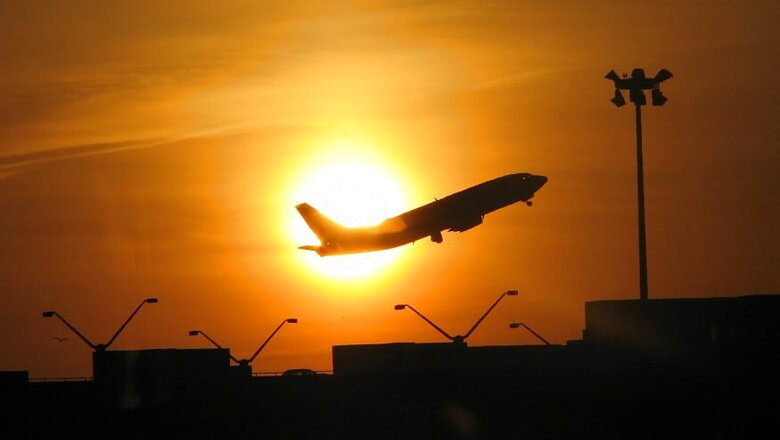
views
Finance Minister Nirmala Sitharaman, in her Union Budget 2019 speech, said the government will bring out a policy framework for making India a global hub of aircraft financing and leasing activities. “The time has come for India to venture into this field in a big way,” she said. But what exactly does that mean? And why is it significant? To understand that, let us first go into details of what aircraft leasing is.
What is aircraft leasing?
Aircraft leasing is a process through which airlines lease aircraft or planes from other airlines or leasing companies.
There are two main benefits of leasing for airlines: 1) They can operate aircraft without the financial burden of buying them, and 2) It helps in temporary increasing the capacity when needed.
However, an airline needs to know what type of lease they want – a wet lease, a dry lease or a damp lease. Each of those could be a short-term or a long-term lease.
When an airline wet leases an aircraft, the leasing company provides literally everything – the aircraft itself, pilots and cabin crew. Furthermore, the leasing company also takes care of maintenance and insurance. Mostly, wet leases are short-term leases. Long-term wet lease agreements would be signed only by bigger airlines with more stable passenger numbers on their routes.
Dry leasing happens when the airlines don’t have aircraft, but a lot of free crew available. A short-term dry leasing temporarily solves the fleet shortage problem.
There’s also a damp lease, which is a mixture of both dry and wet lease. When an airline asks for a damp lease, the leasing company loans them out the aircraft, pilots and helps out with the insurance. But agreements differ on the basis of requirements. For example, an airline might have a lot of free cabin crew available. But they lack the engineering personnel to cover the maintenance operations. So, a damp lease helps loan the aircraft, get the pilots, insurance and maintenance personnel, but avoid the additional cabin crew, pulling down the overall lease cost.
Where does India stand?
In spite of the high demand for leased aircraft in India, there are no lessors based in India. It means there is no leased aircraft with an owner registered in India.
This is despite the fact that 81% of commercial aircraft in India were leased as of October 2018, compared with 53% globally, according to a Capa report. This shows that Indian operators rely much more heavily on leased aircraft than airlines in other parts of the world. Many of India’s largest airlines are either relatively new, or have fragile financial positions, or both, which has made them strongly dependent on leasing.
Hence, Sitharaman’s statement assumes significance. India’s foray into the aircraft leasing business can make the Indian aviation sector self-reliant.















Comments
0 comment